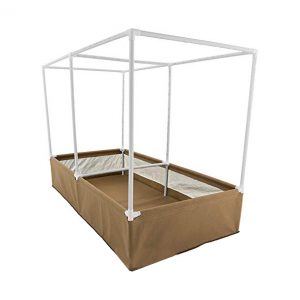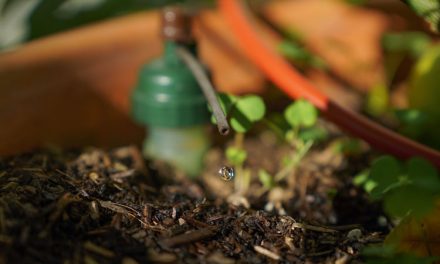1) Find Garden Space
Once you set your mind to making any spare room into a garden, you’re already on your way to a Victory Garden. These historical gardens have debatably never been more important than today. Supply chain concerns due to COVID-19 have highlighted the fragility of our current food/medicine production systems. When you plant a garden, you increase resiliency of yourself, your household, and your country.
Any space with some sunshine will do, but you’ll want to consider what species you’d like to grow, and how much sunshine they require. If you have a wide-open yard that gets full sun but you want to grow lettuce, you’ll want some shade cloth. Alternatively, if you have a small deck with partial sun outside your apartment, don’t plan for tree-like sunflowers.
Even if you have no space, you can create your own using American-made Grassroots Fabric Beds:

2) Prepare the Soil/Land
Once you have some space set aside, you’ll want to get the soil ready for gardening. There are many methods for this, but here are a few of my favorites for 1st-time garden areas*:
- Blend your own soil for fabric raised beds
- Add beneficial microbes, compost, minerals, and/or fertilizers
- Till/broadfork the land to kill existing plants and aerate soil
- Cover existing lawn, clover, weeds, etc. with plastic or a tarp for several weeks. Once they are dead, cut the area in sections and flip upside down
- Heavily mulch an area a season ahead of time to kill existing plants while also fertilizing
- Encourage worms and other organisms with organic matter
*I would not recommend these processes every year, especially tilling and other processes that severely impact soil structure. These should be practiced a single time in specific circumstances as part of a long-term strategy.
3) Introduce Plants
Once you’ve got soil ready for planting, it is best to get plants in right away. This minimizes competition from weeds and other pioneer species that will readily and immediately colonize your beautifully prepared soil!
You can either sew seeds directly into the soil or germinate them ahead of time. I like to germinate my seed in a more controlled environment than directly planting them, but it’s a personal preference. Once you get plants in the ground, you are growing!
4) Irrigate
Now that you’ve got plants situated, their environment is more or less taken care of. They are supplied with sunshine, nutrients, and they just need water! You can always reach out to the designers at Sustainable Village for a free quote/design for a customized irrigation system for your garden.
For economical solutions, EasySoak systems are recommended. For mid-range and deluxe budget levels, you’ll want a Blumat & BluSoak based watering system. The former is cheaper and requires less maintenance, while the latter
5) Enjoy Harvest & Get Ready for Next Season!
Assuming you had a successful season, you now get to reap the rewards of your hard work. Or, if you used a Blumat system, you probably did not work very hard, but are still enjoying harvest!
Even if your harvest wasn’t as successful as you anticipated, don’t be discouraged–most first-time gardeners quit by the following year. There is a learning curve, like any other endeavor. Reach out to your botanical gardens or other experienced local gardeners to find out what you could do better next year.
For most of us, this is the time to put some mulch down to feed the microbes, worms, and ultimately the soil for next year.



